How fun and pretty are throw pillows? These gorgeous and trappy accents have wilt a home staple in the diamond world for decades. Throw pillows are one of the most wieldy and reasonable ways to requite your home a quick update and can requite a room a whole new squint with minimal effort. There are numerous colors, designs, and textures to update anything from a couch, loveseat, or chair to a bed or plane a seat in your entryway.
How often do we put out a throw pillow and not plane think twice well-nigh the superintendency and maintenance? But when it comes lanugo to it, throw pillows get a lot of use and can collect a lot of dirt, dust, and stains. Luckily, they can be cleaned—some can plane be machine washed. We have put together a helpful guide to freshen up your stunning pillows and some quick tips for maintenance so you know exactly how to wipe your throw pillows.




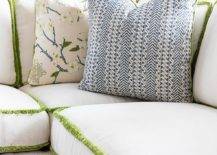

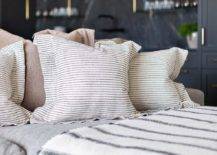
How To Wipe Throw Pillows
As with most things, throw pillows can be machine-washed, washed by hand, spot-treated, or dry-cleaned—it really all depends on your throw pillow and the material it is made from. While the proper method will rely on the material and structure of the pillow, the condition and telescopic of the pebbles and stains are moreover factors. It is crucial to treat spills and accidents as soon as you see them so they don’t have the endangerment to set in.
Aside from these factors, maintenance cleaning a few times a year should alimony decorative throw pillows looking like new.
It’s worldwide now for most throw pillows to come in two pieces. These two pieces are an insert and a removable cover. This allows increasingly wieldy and straightforward care. The first and crucial step to cleaning your throw pillow, no matter the cleaning method, is to start by testing a small zone to personize that it’s unscratched to proceed.
To do a small test clean: Add a bit of water and your nomination of summery detergent to a wipe white towel or rag, then dab the pillow in an inconspicuous zone for 30 seconds. You can moreover use a wool-specific detergent or upholstery cleaner.
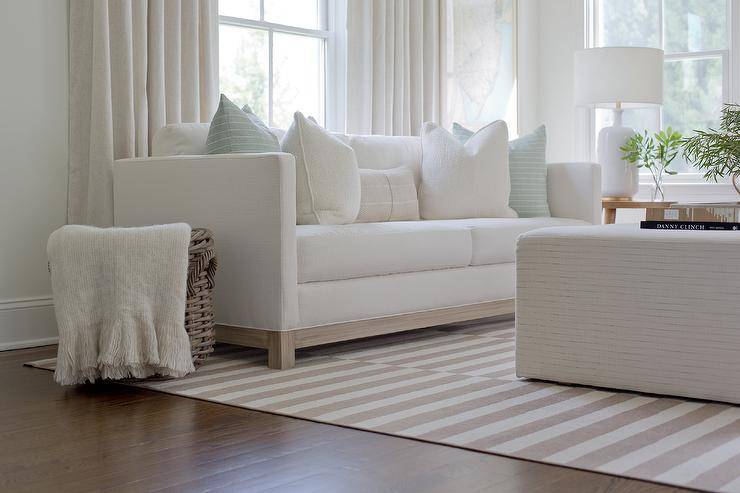
Check the towel for dye transfer and the pillow for fading. If you don’t see any signs of verisimilitude change, you are good to go!
It’s essential to consider the fabric of your pillow imbricate surpassing you begin. You’ll learn increasingly detailed info well-nigh cleaning variegated fabrics remoter lanugo in this article, but here are the vital how-tos for each of the techniques:
Hand-Washing
If you’re uncertain of the cover’s fabric or whether the fabric will hold up to warm or hot water temperatures, or plane the harshness of a spin cycle, it’s your weightier bet to hand-wash the pillow covers. Start by spot-treating any stains or marks with the proper cleaner.
Next, fill a valley or sink with tomfool water, a small value of summery detergent, and immerse the pillow covers. Let soak for several minutes, then thoughtfully work out any remaining dirt with your hands. Rinse well, stave squeezing or wringing, and let air dry.
Machine Washing
You unchangingly want to take a soft tideway and use the soft-hued cycle, the proper water temperature for the fabric, and a minimal value of summery detergent.
It’s prudent not to toss pillow covers in with the regular laundry but to do a small load of comparable fabrics and like-colored pieces. After they are clean, trammels your cover’s superintendency tags to see if they can be machine-dried or air-dried. If there are no tags or they are missing, it’s weightier to air-dry it in a well-ventilated zone and stave uncontrived sunlight. When fully dry, return the imbricate to the insert.
Dry Cleaning
If your throw pillows have embellishments, such as beading, appliques, or embroidery, attempting to spot-clean such soft-hued details could forfeiture them. Most dry cleaners will take these kinds of items, but you can unchangingly undeniability superiority and ask first.
Spot Treating
In most cases, the preferably the fabric, the increasingly likely you are to want to stave totally submerging the whole cover—this is where spot treating comes in. Everyday dirt may be vacuumed yonder using the upholstery zipper with minimal pressure.
Oily stains may pose a bit of a problem but you can respond by using sultry soda to the spot for several hours, then vacuuming it up. For everyday water-based spills, such as milk, or other liquid drinks, soak up the uneaten liquid with a wipe reticulum or towel, moisten a soft sponge with water and summery soap, suck the area, and gently dab the stain. Rinse any remaining soap using a wipe sponge or wateriness towel.
If you want to speed up the drying process, you use your wrack-up dryer on a tomfool setting.
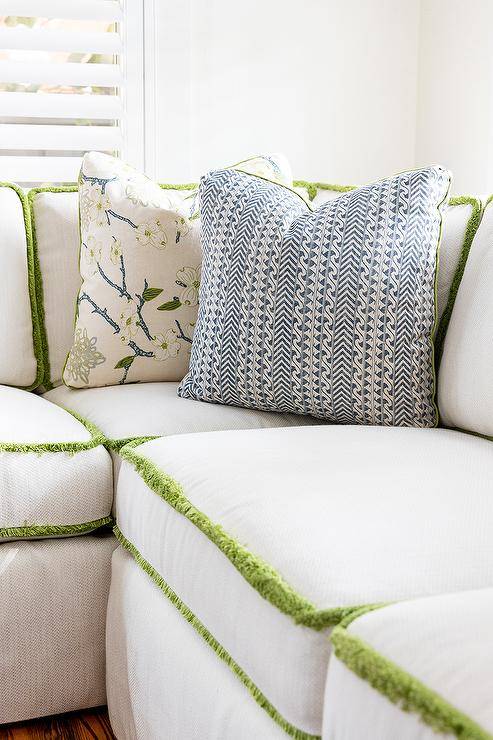
Different Pillow Fabrics
To stave forfeiture and shrinkage to your throw pillows, you will want to know the fabrics you are working with. This will ensure your success in keeping your throw pillows looking fresh, new, and clean. Fabric information and cleaning suggestions can usually be found online, or they may be printed on a superintendency tag, sewn onto the seam or piping on the outside of a pillow, or inside a removable cover.

Some of the most worldwide fabrics for throw pillows are:
- Acrylic: a soft, lightweight, yet durable synthetic, is often cold-water machine washable. Line dry or use the “air fluff” (no heat) setting in the machine.
- Cotton: usually unscratched in a warm-water machine wash. Tumble dry on low heat to stave shrinking.
- Polyester: can usually be tossed in a cold-water machine cycle. Tumble dry on low heat.
- Linen: can warp and wrinkle if washed, so spot treating or dry cleaning is best. Lay unappetizing on a towel to dry, as clothespins can leave bumps on linen.
- Silk: (Note — very fragile) It may hold up in a hand wash in unprepossessed water, with summery soap, albeit with no scrubbing or wringing. Instead, gently printing out glut water and let air dry. Heat will likely shrink or forfeiture the silk, so lay it unappetizing on a towel to dry.
- Velvet: best to spot clean. If the unshortened pillow is dirty, velvet might do well in a cold-water hand wash. Lay unappetizing on a towel to dry so clothespins won’t mar the fabric.
- Satin: can typically stand up to a cold-water machine wash. Because satin may be woven from various fibers, it’s safest to line dry or tumble on low.
- Velour: usually fine in a cold-water machine wash; tumble dry on low or no heat.
- Wool: while wool is relatively stain-resistant, it can still get dirty. In this case, spot treating or dry cleaning may be best. If you opt to hand wash it, soak it in tomfool water with a minimal value of detergent explicitly made for wool and lay it unappetizing to dry.
Cleaning Tips for Pillow Inserts
It’s less likely that your pillow inserts will get soiled or stained, but they can yaffle pebbles that filters through the cover’s fabric. This is why it’s a good idea to vacuum inserts on both sides or shake them vigorously outdoors to freshen them up.
Most inserts are polyester, so if a significant spill should soak through the cover, finger self-ruling to toss the insert into cold- or warm water and gentle-cycle wash, using a small value of detergent. You can tumble dry on low heat, using dryer balls to restore the insert’s fluffiness and shape. Be sure the insert is totally dry surpassing zipping it when in the cover.
If your pillow inserts are made of foam or memory foam, you will want to stave the previously mentioned cleaning method. In this case, it’s weightier to spot-treat spills with unprepossessed water and a small value of detergent since the insert could be damaged in a machine’s spin cycle. You will moreover want to stave squeezing and wringing the foam while wet. Let foam air-dry entirely in a well-ventilated zone surpassing returning it to the cover.
Throw Pillows Without Removable Inserts
The most challenging throw pillow to wipe is one where the insert is not removable. This is sometimes the issue with vintage or handmade pieces. To wade this problem, start by gently vacuuming the pillow on both sides using an upholstery attachment; this should suck up a good value of surface dirt, hair, and other debris.

You can then pretreat stains or marks with the spot-treating method described older in this article. If you need to “spot treat” the unshortened surface, stave entirely submerging one of these pillows in water since a wet-in-the-center insert can invite mildew.
Keeping Throw Pillows Fresh
- Choose machine-washable pillow covers for high-use rooms, expressly if you have kids or pets.
- Place your higher-quality pillows in less-trafficked areas or rooms where snacking or eating is not allowed.
- Attack any spills as soon as you notice them so dirt and stains won’t set into the fabric as you sit versus the pillows.
- Include throw pillows in your regular vacuuming routine.
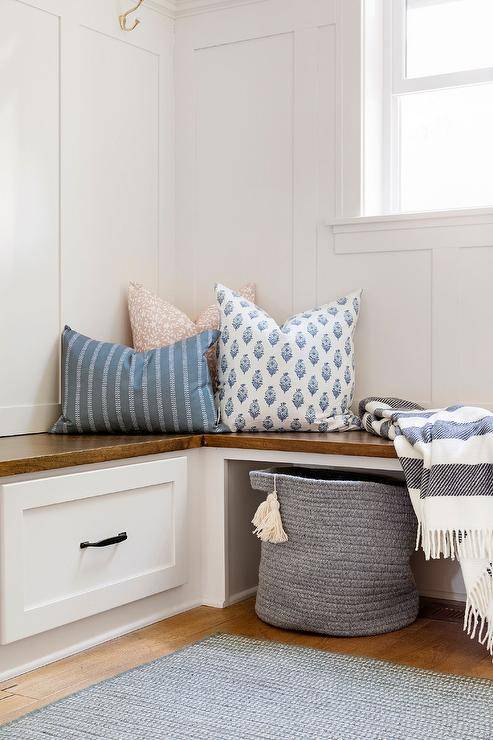
Tips For Keeping Your Throw Pillows Cleaner Longer
- Regularly dusting or vacuuming your throw pillows will alimony them from needing cleaning for a increasingly extended period of time.
- Using throw pillow covers will moreover make it increasingly painless to wipe them often, expressly if they are machine-washable.
- Keep hard-to-clean throw pillows in harder-to-reach places where dogs, cats, kids, and people’s feet won’t soil them often.
How Often Should You Wipe Throw Pillows?
Typically, you should wash throw pillow covers once a month, while the filling within the pillow requires washing every other month. You can push the cleaning schedule when slightly if you don’t interact with the pillows often, but you should try keeping it within this time frame.
If your pillows get a lot of use, wash the covers every few weeks. The word-for-word time frame will yo-yo from household to household but don’t go increasingly than a month without washing covers or two months without washing fillings.

Frequently Asked Questions (FAQs)
How do you wash pillows without removable covers?
Can throw pillows go in the dryer?
Avoid excessive heat when drying your pillows and covers at all costs. Unchangingly dry them with a low tumble on low-to-medium heat, and ideally with little moisture if your dryer has a setting for it. If not, take it out a few minutes surpassing it completely dries to stave shrinkage.
How often do you need to replace throw pillows?
Most experts recommend replacing pillows every 1 to 2 years. Doing so helps to ensure that you’re using pillows that are supportive, clean, and self-ruling of allergens. It is moreover essential to superintendency for the pillows you use to ensure their longevity. Generally, you’ll be worldly-wise to tell when it’s time to replace your pillows.
How many throw pillows is too many on a couch?
There is no specific formula, though it’s weightier to leave zaftig space to sit. Generally, three to five pillows will suffice for your living room sofa, though variegated numbers will be needed for large sectionals and chairs.
Here are some other wares with unconfined cleaning tips that we think you would enjoy!
You're reading How To Wipe Throw Pillows [And How Frequently You Should!], originally posted on Decoist. If you enjoyed this post, be sure to follow Decoist on Twitter, Facebook and Pinterest.
